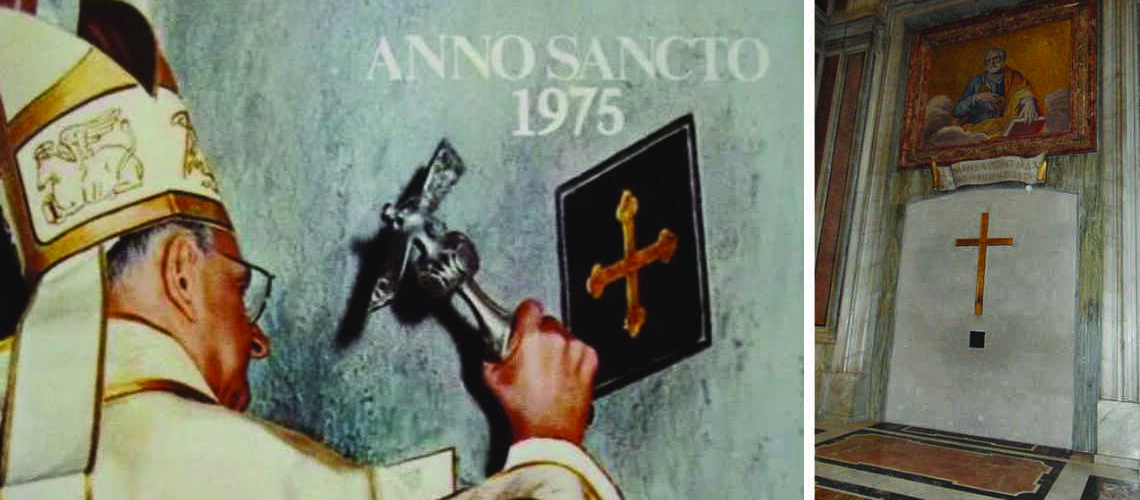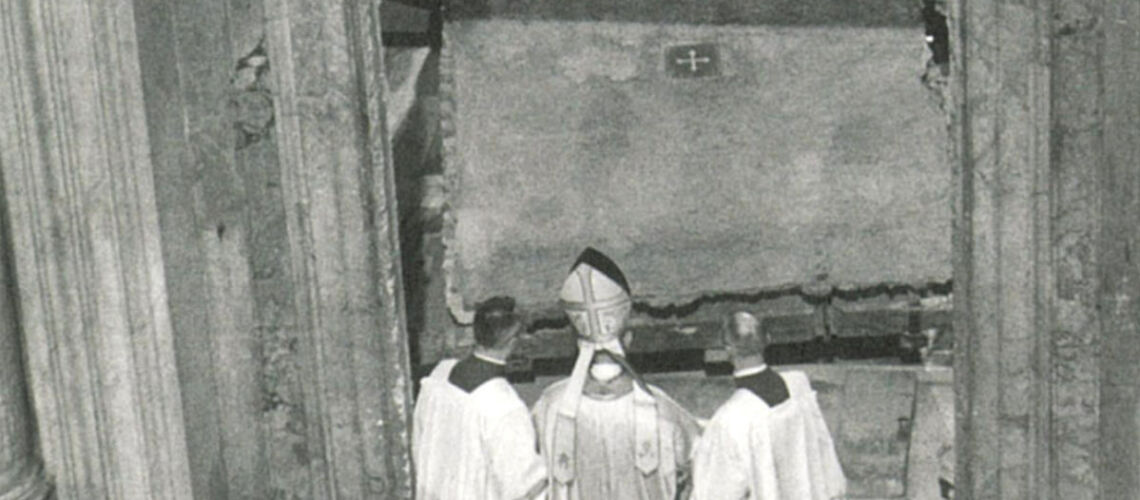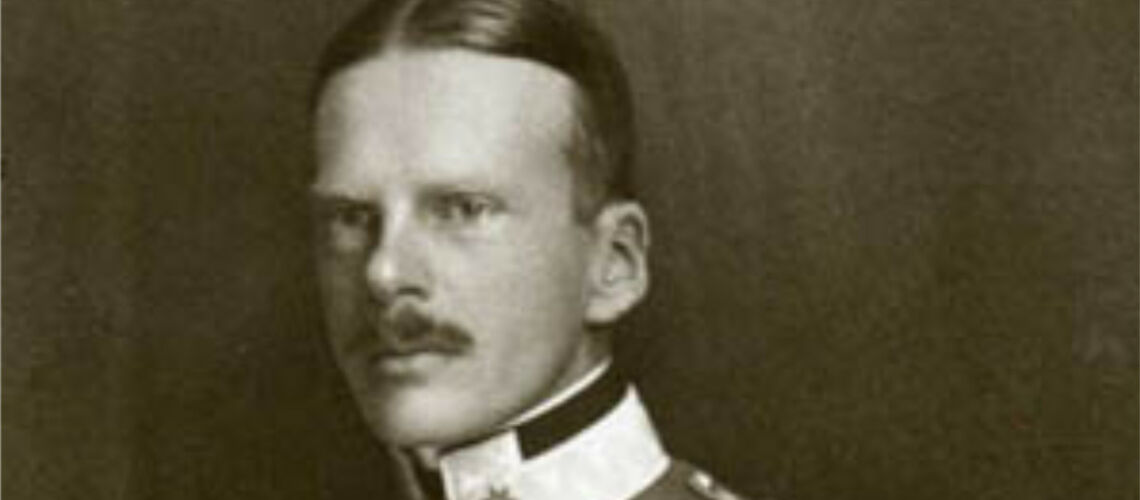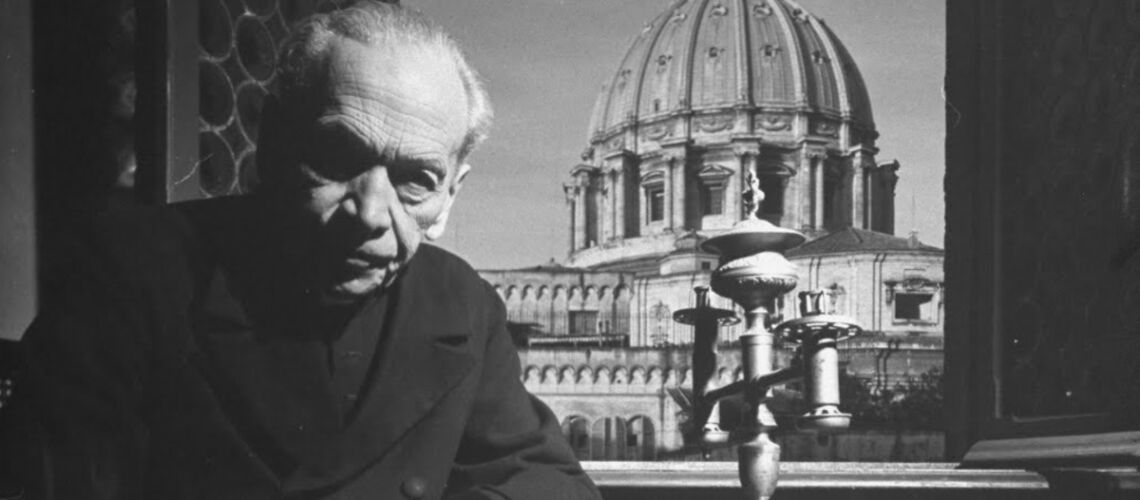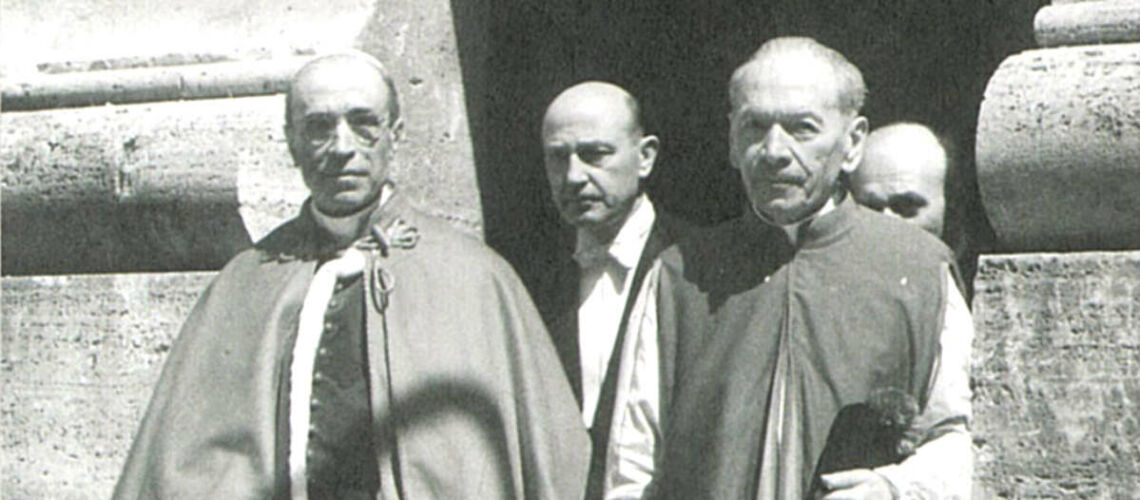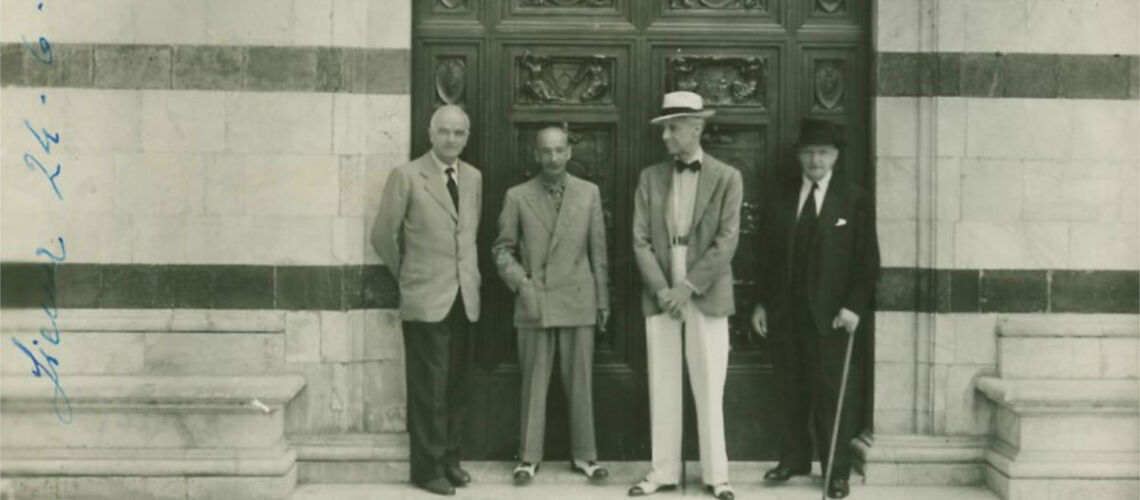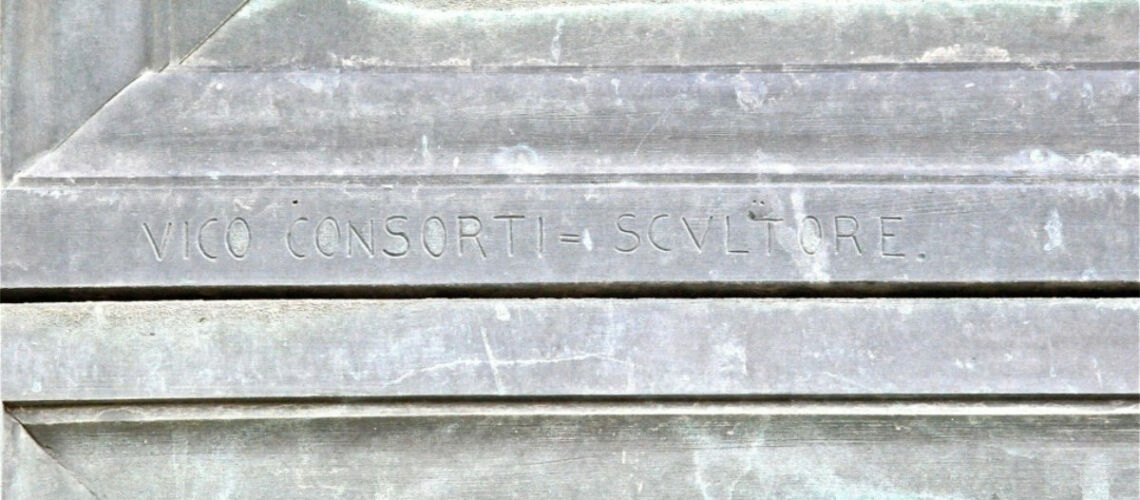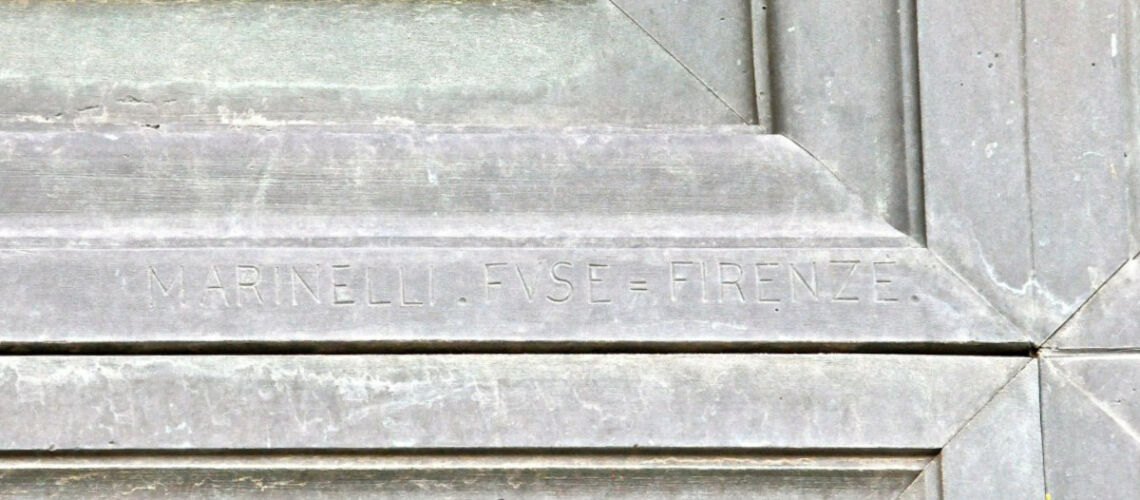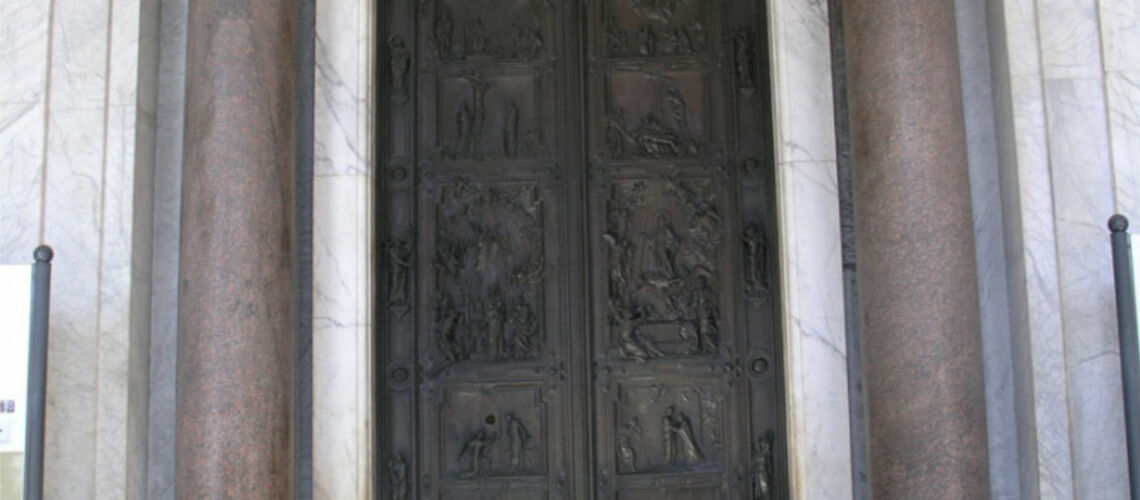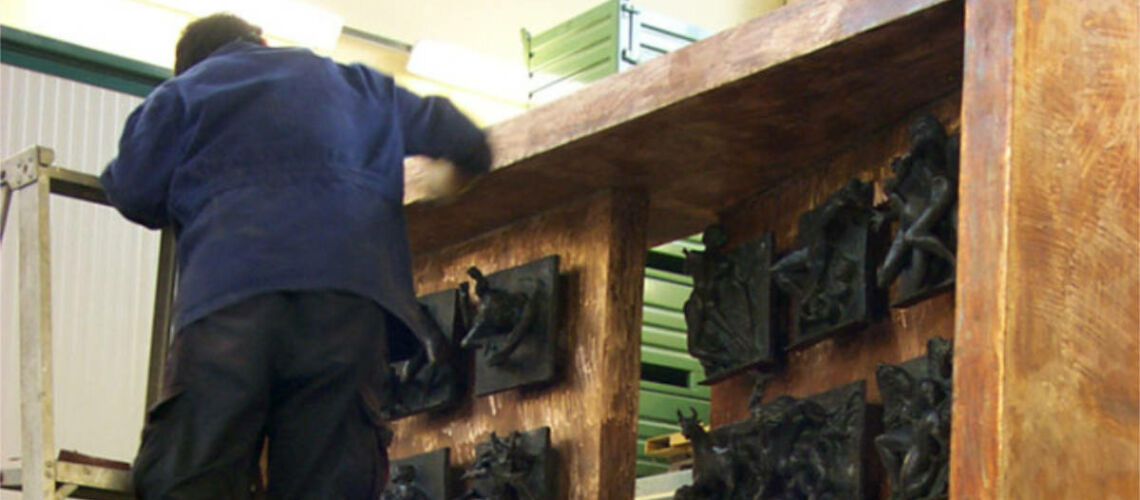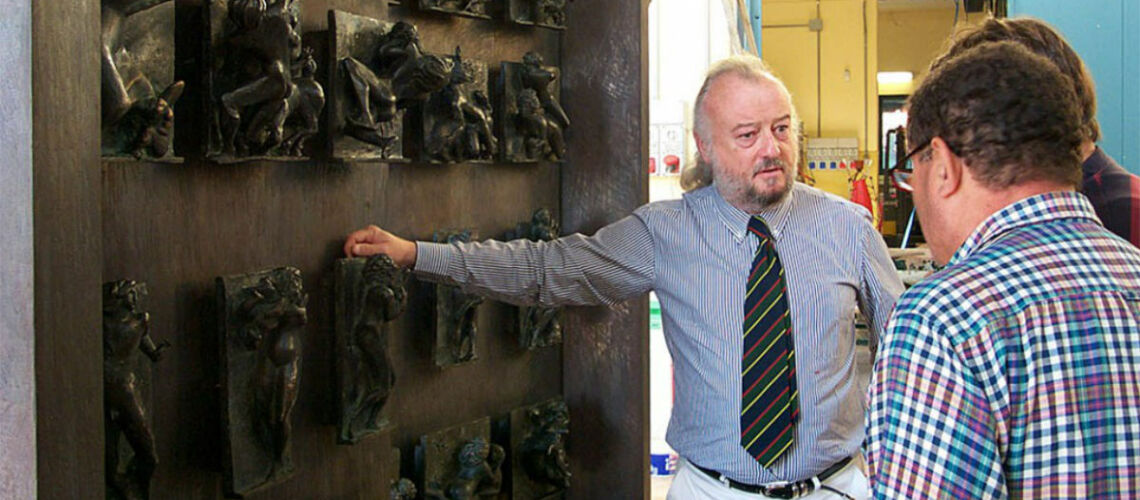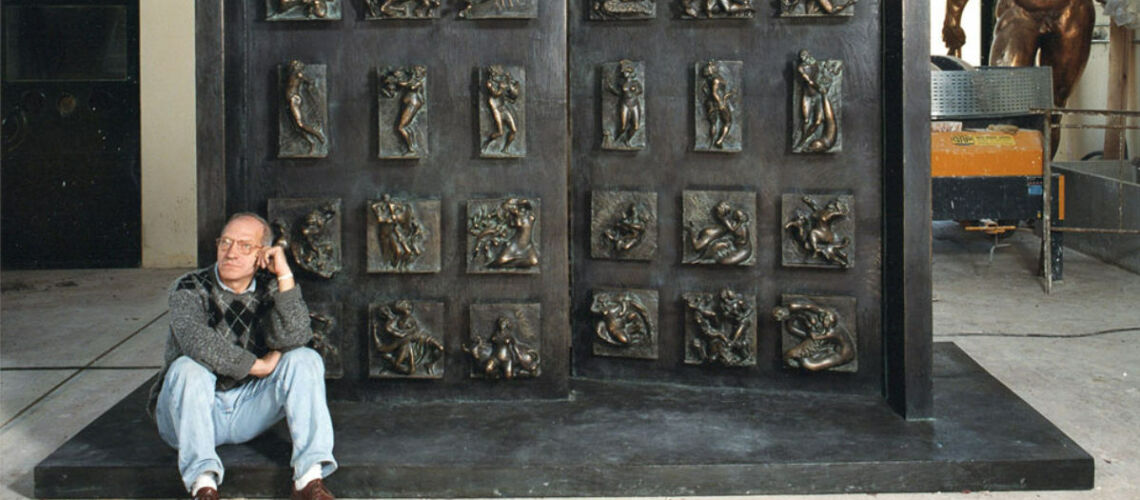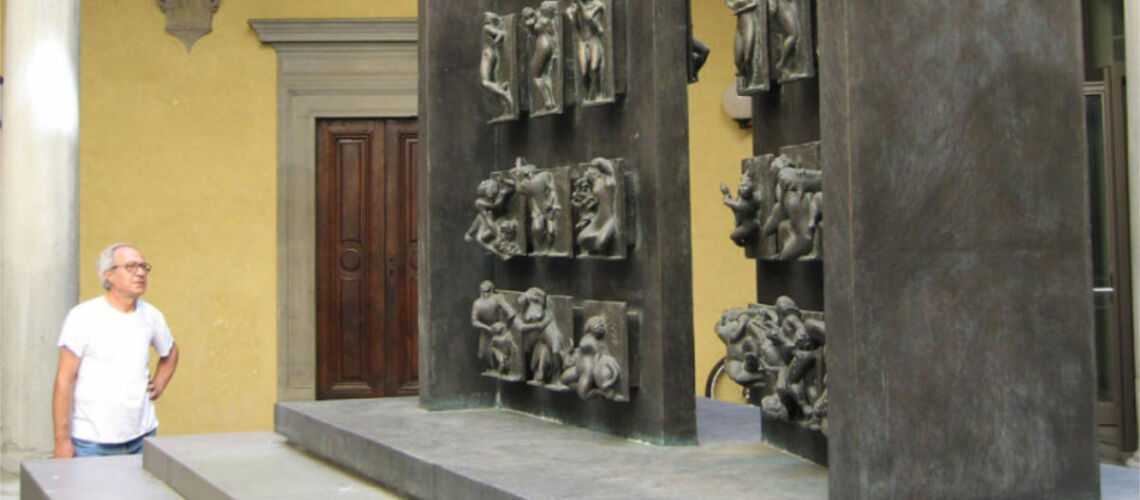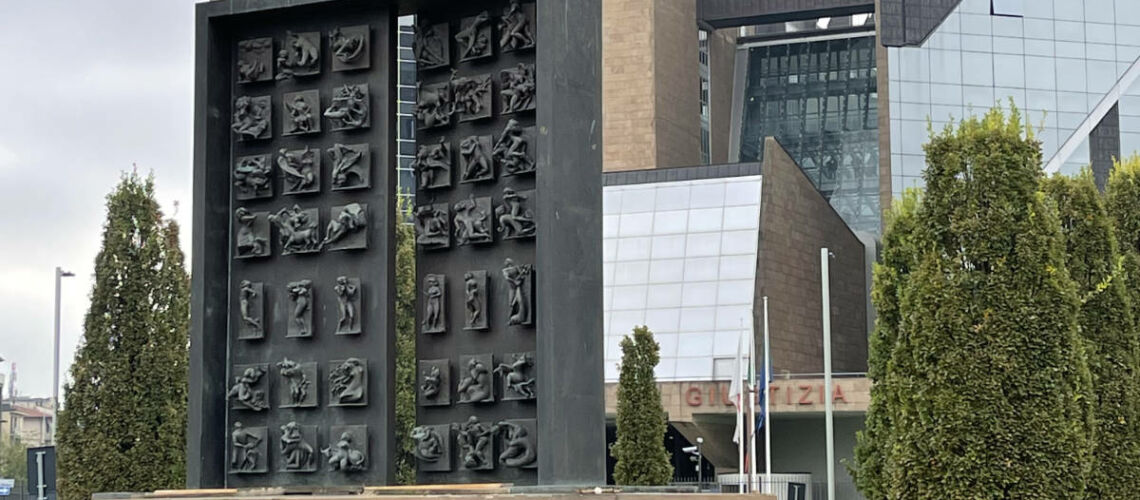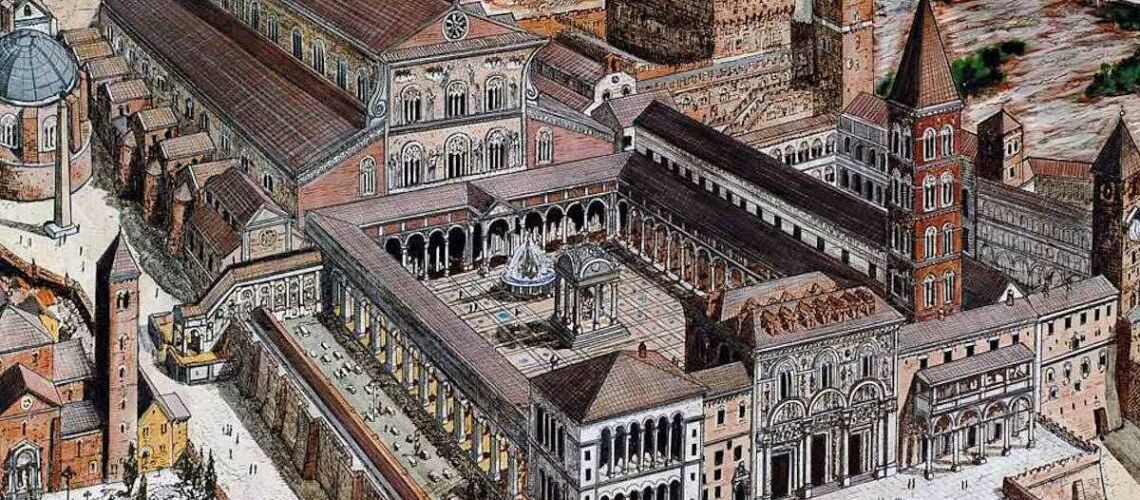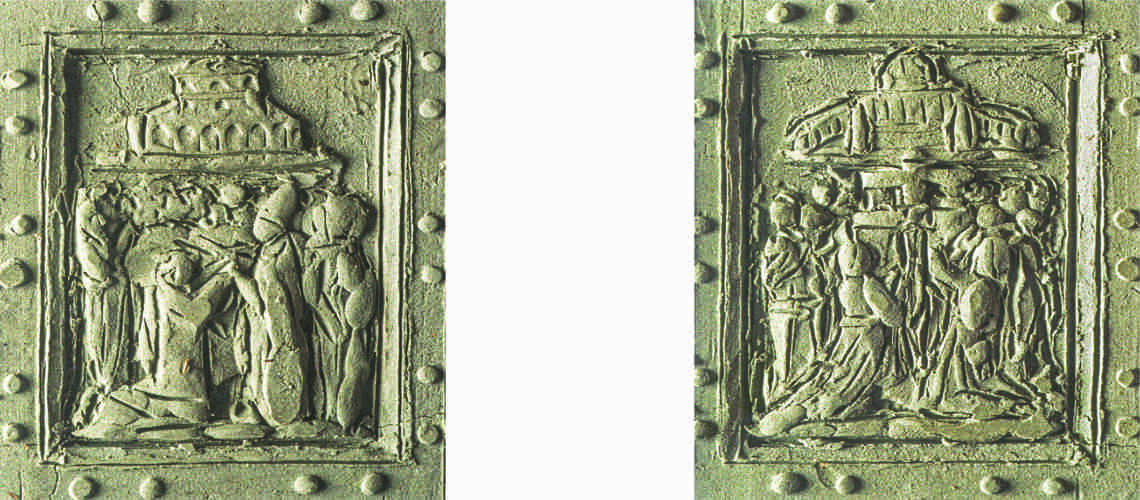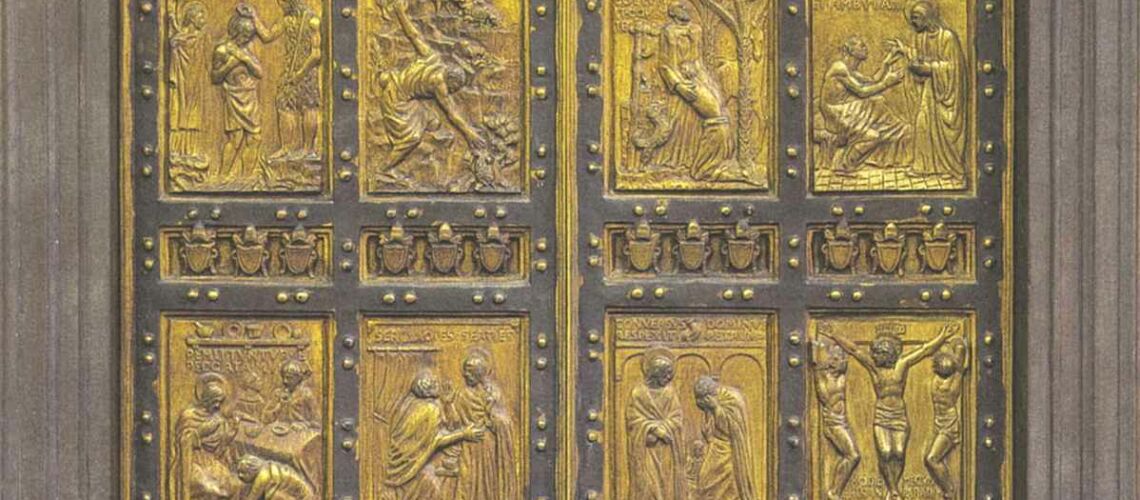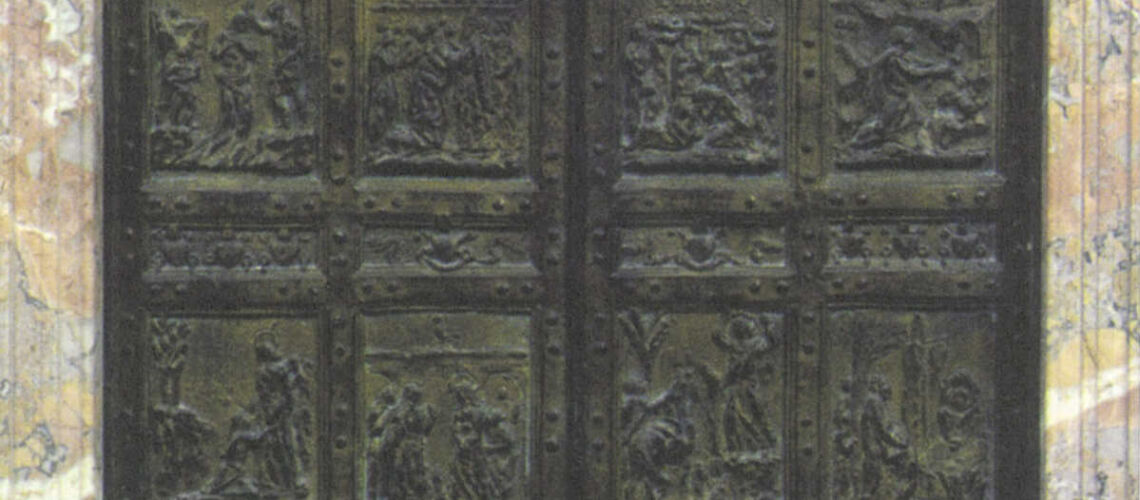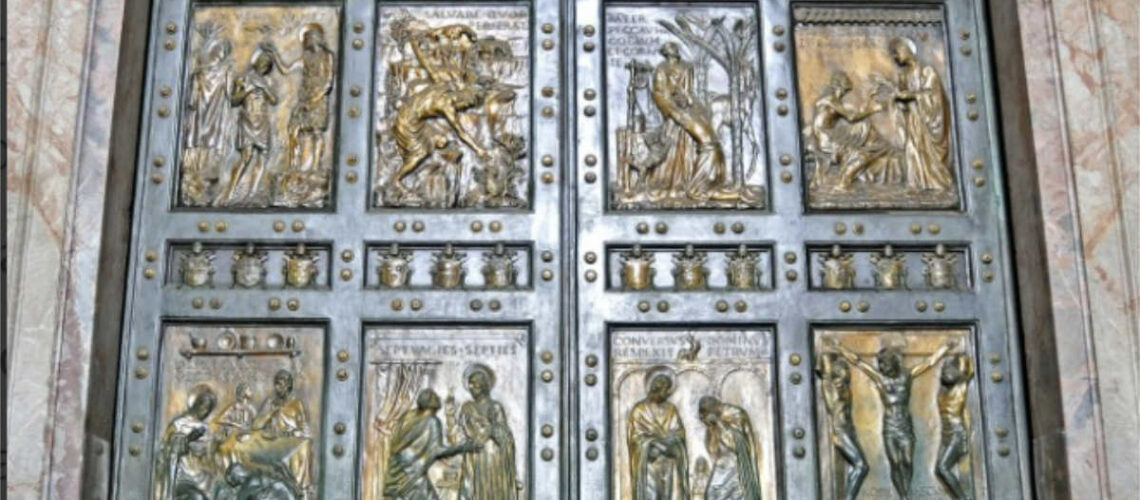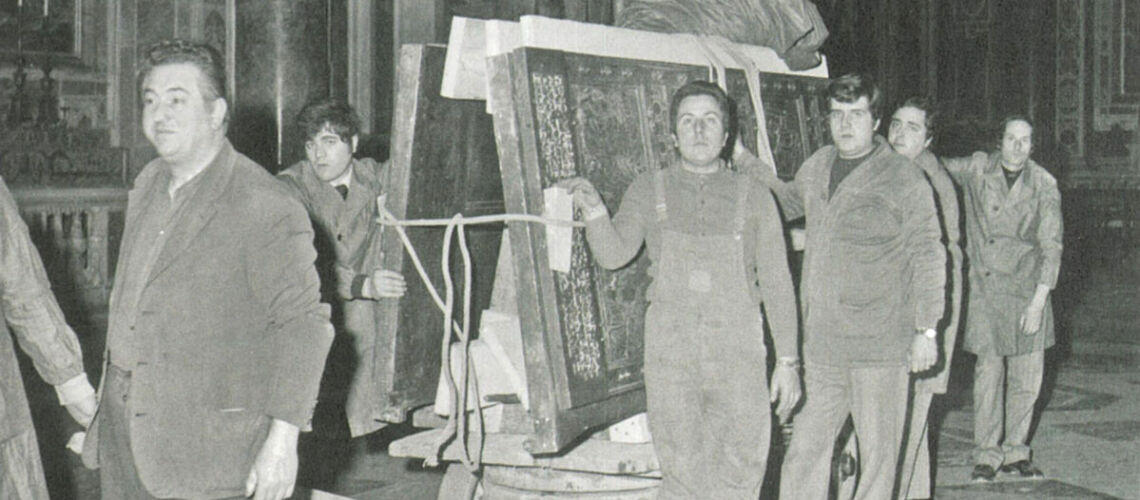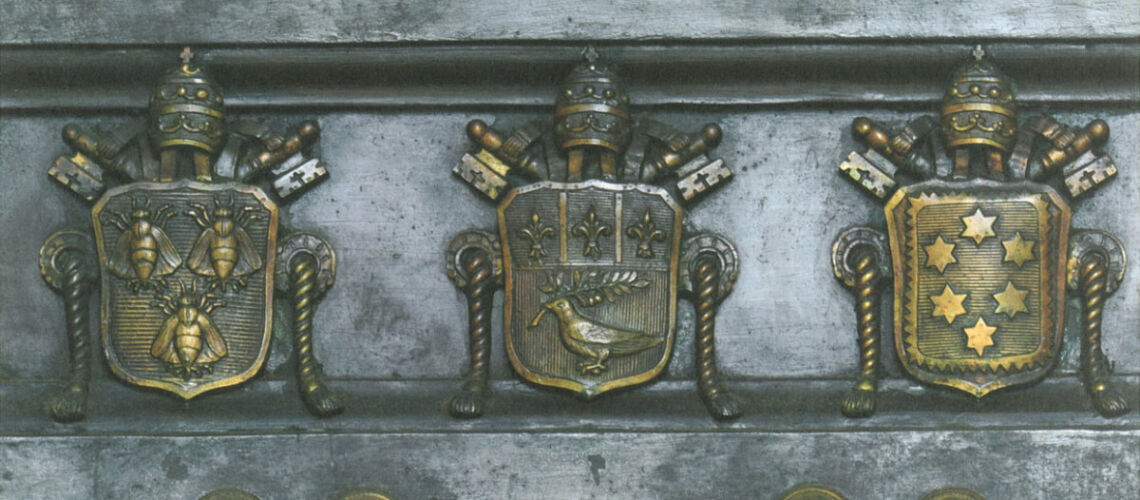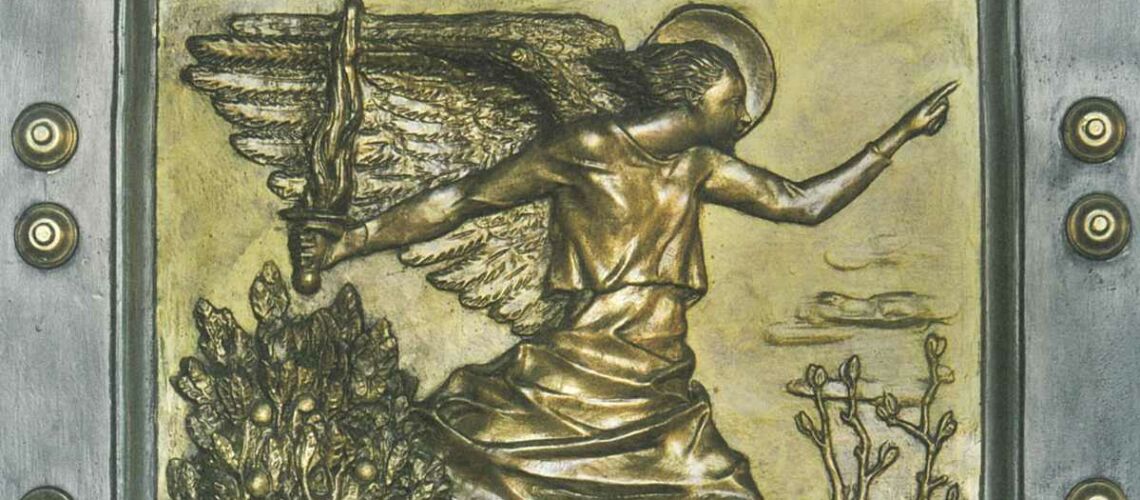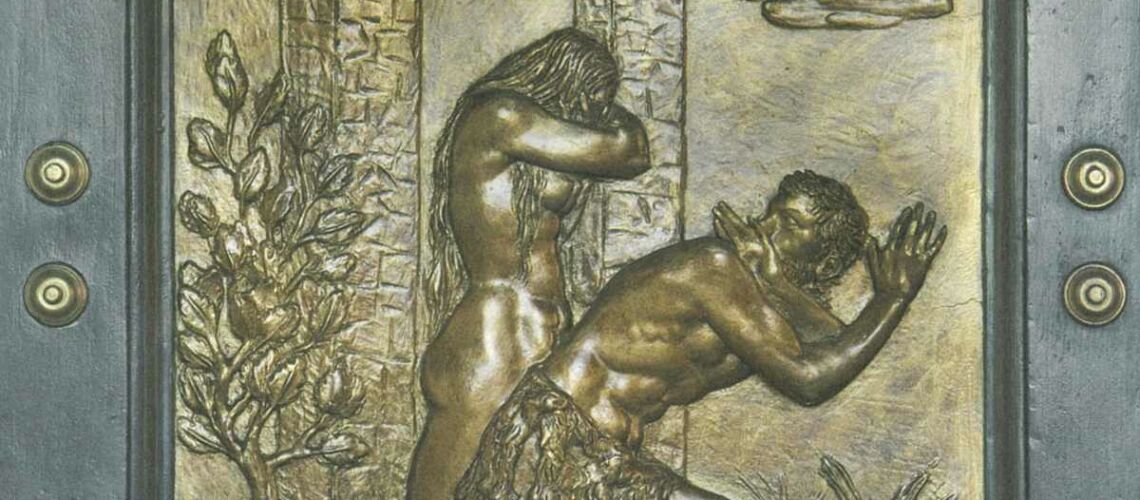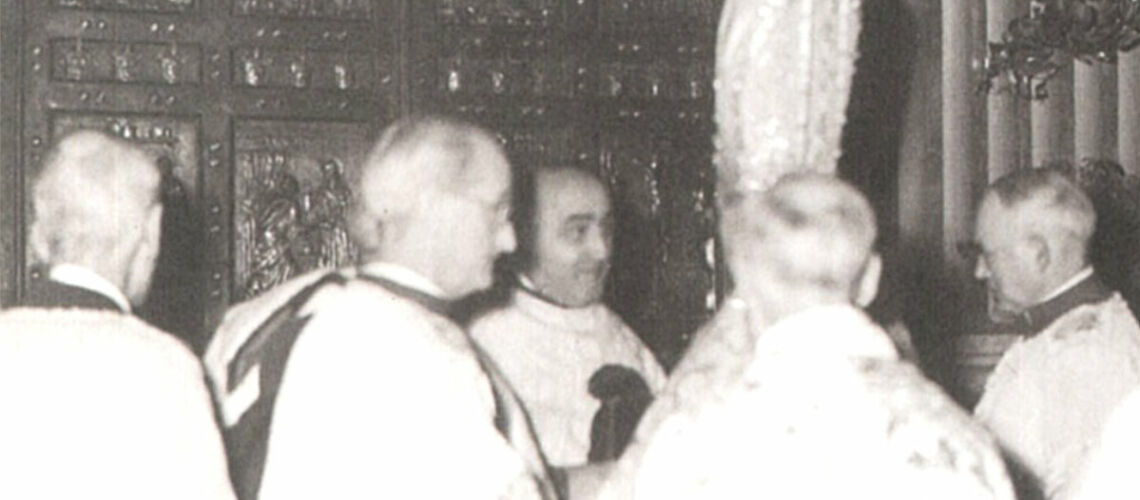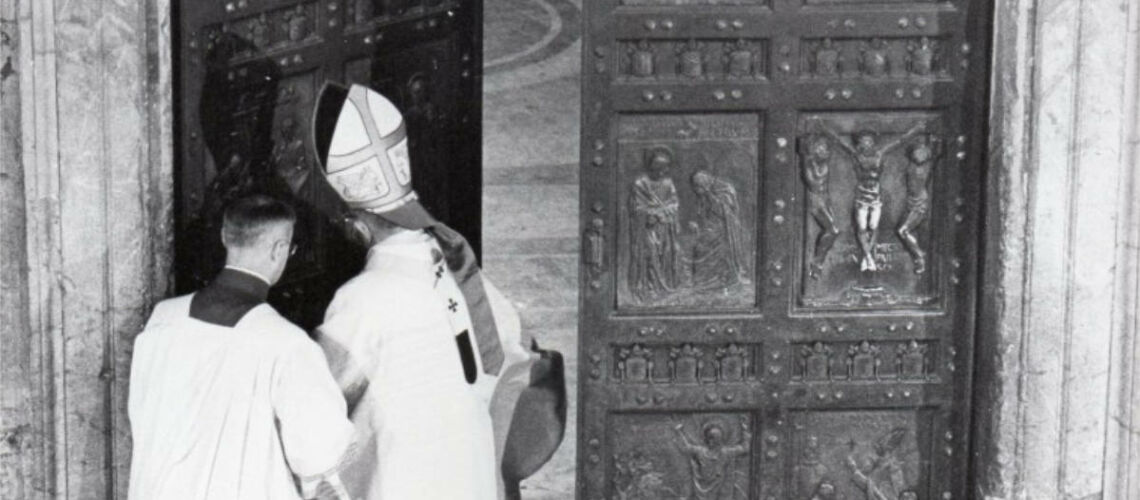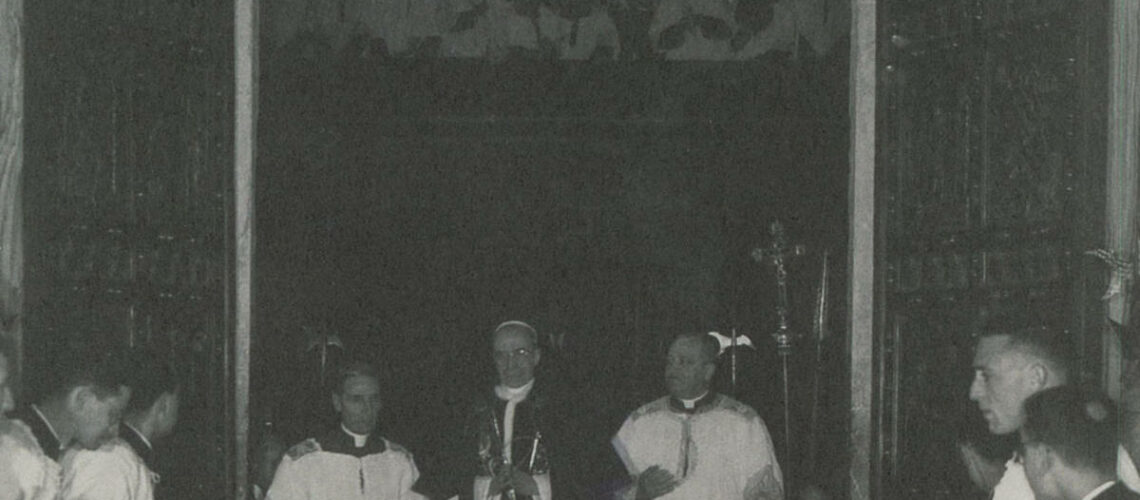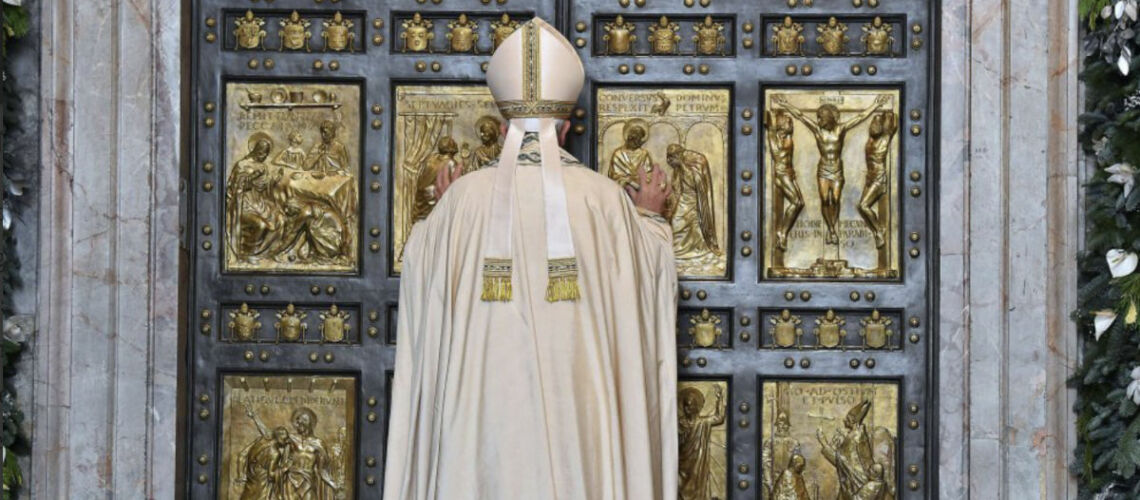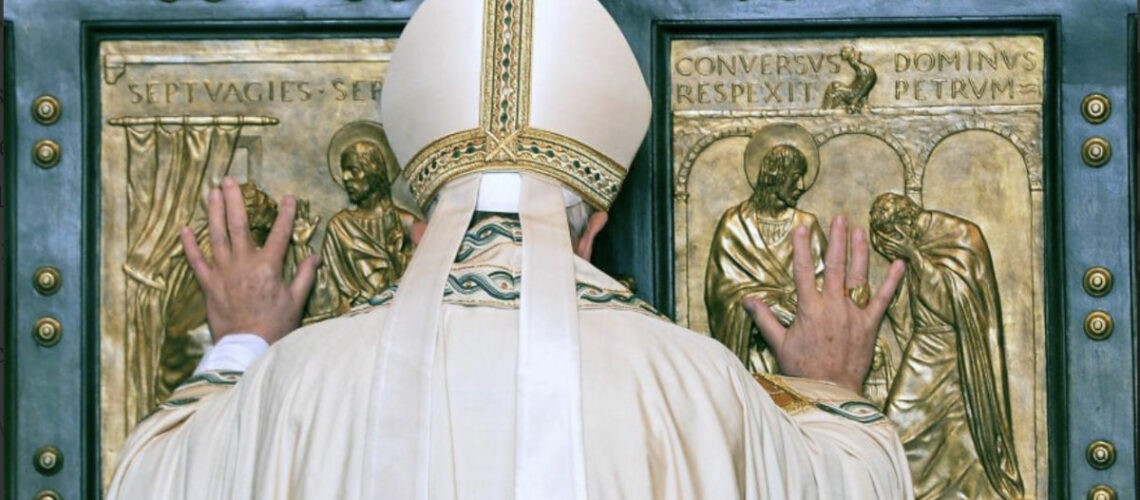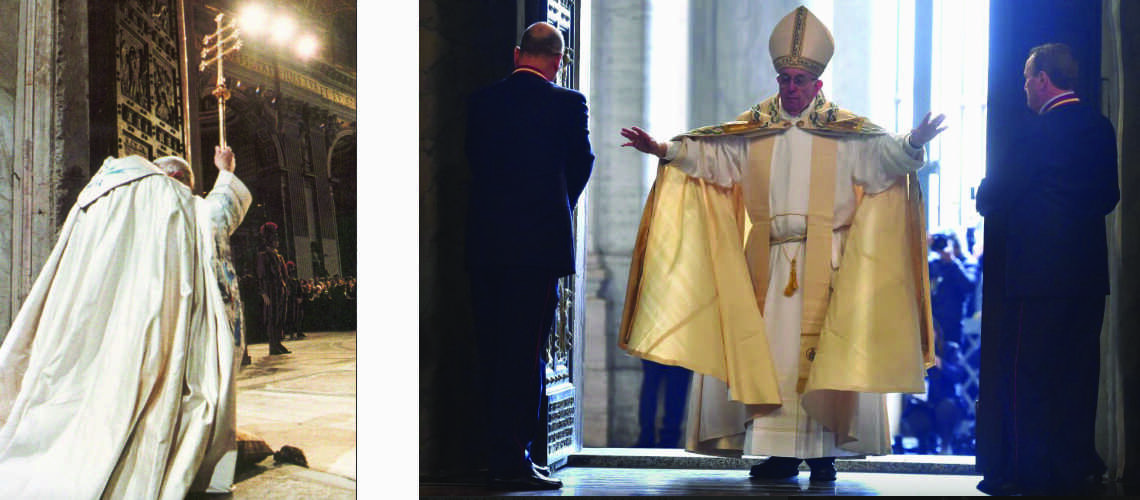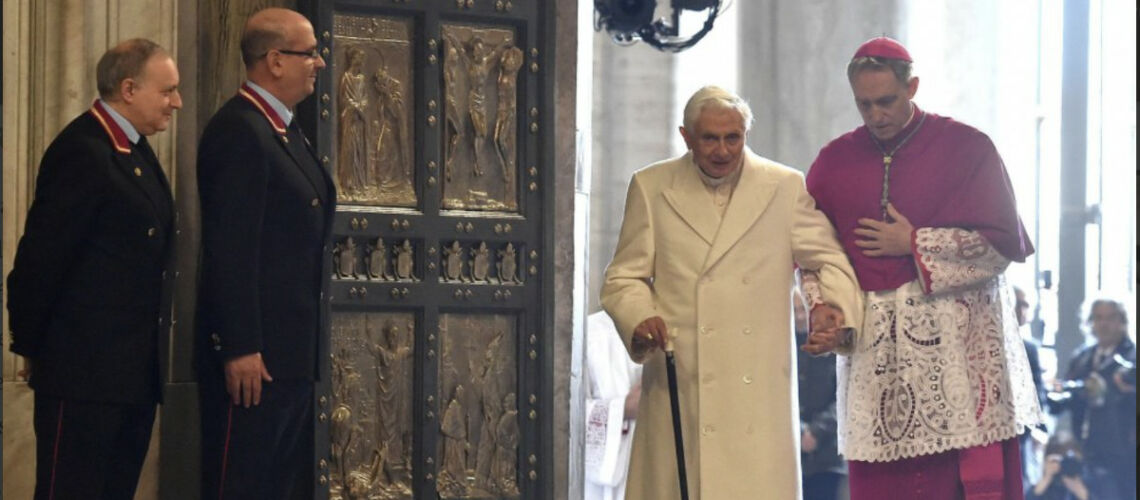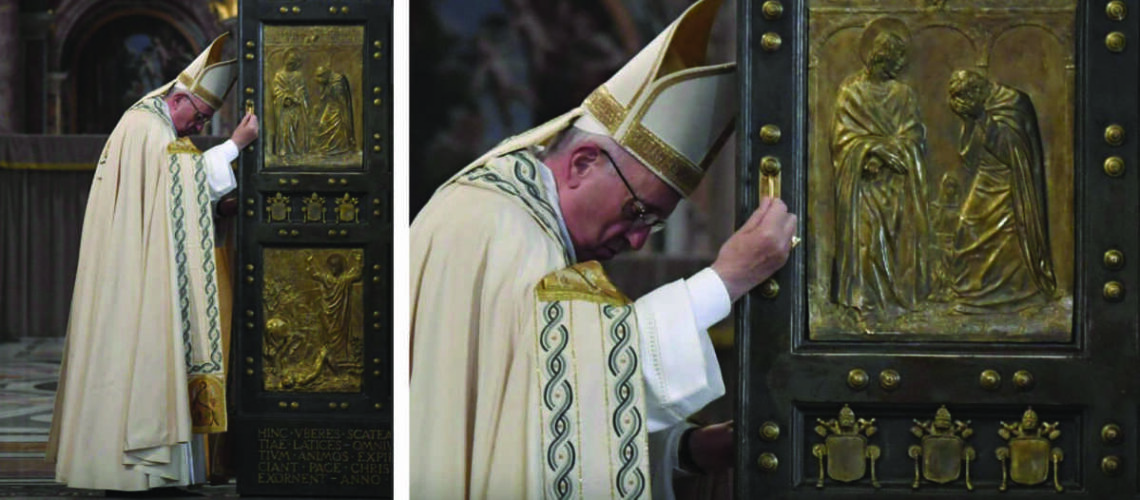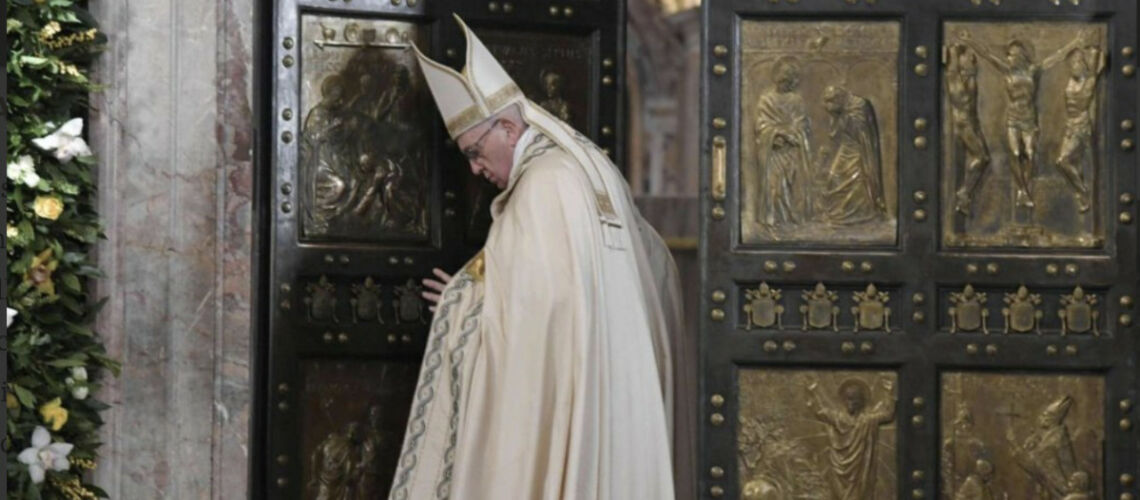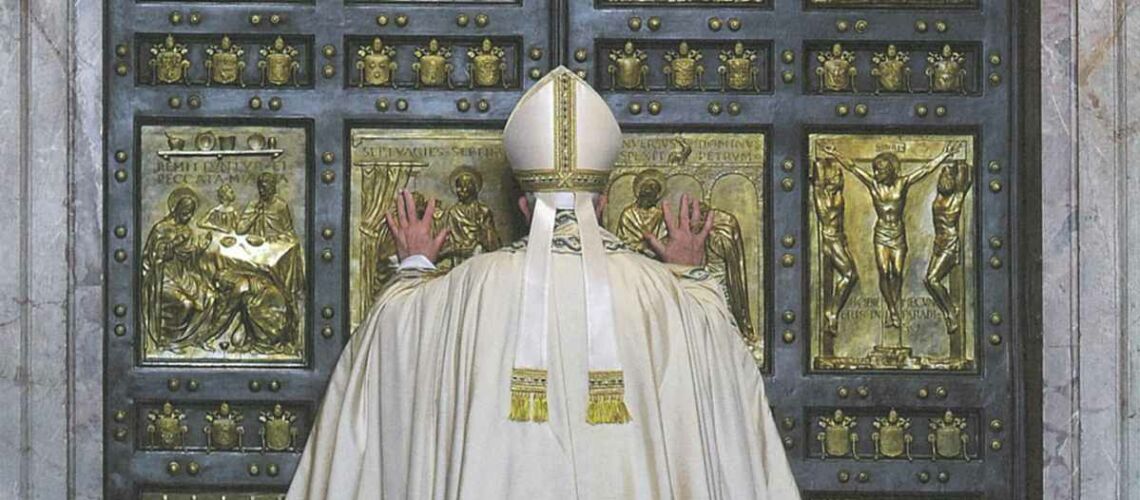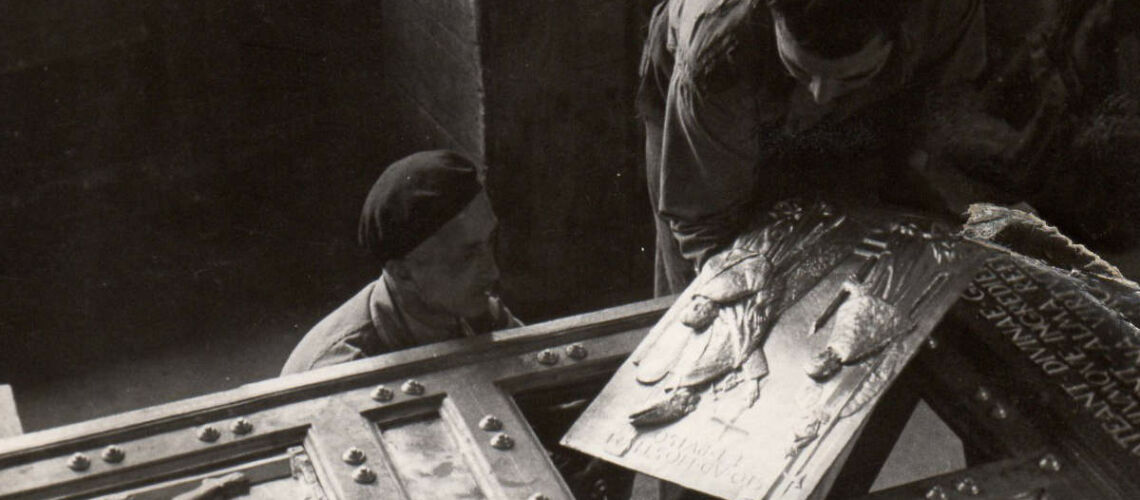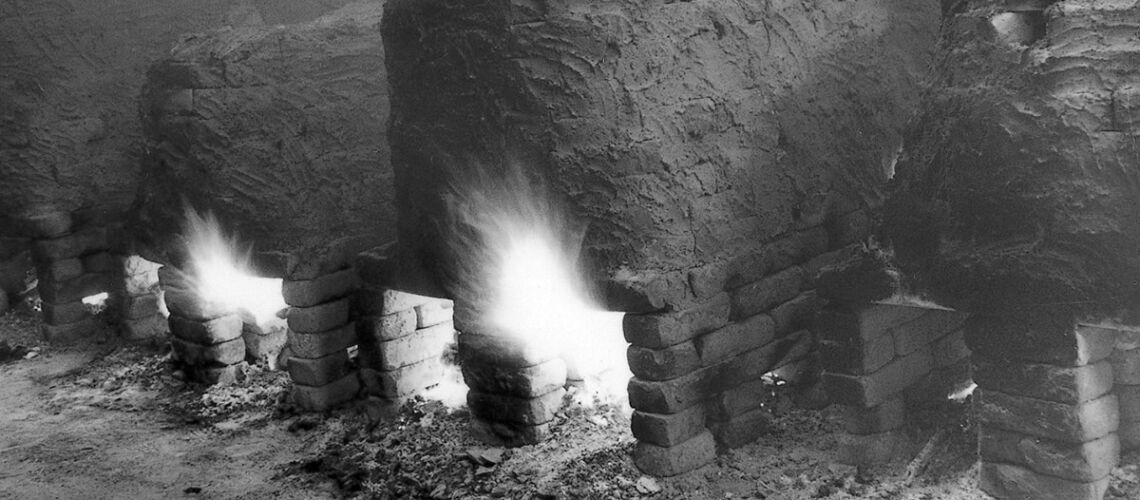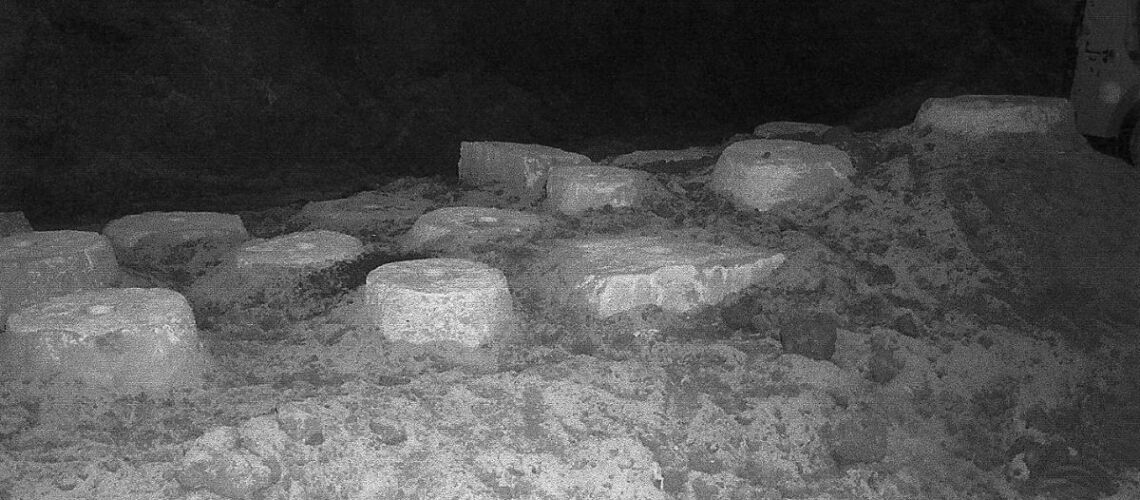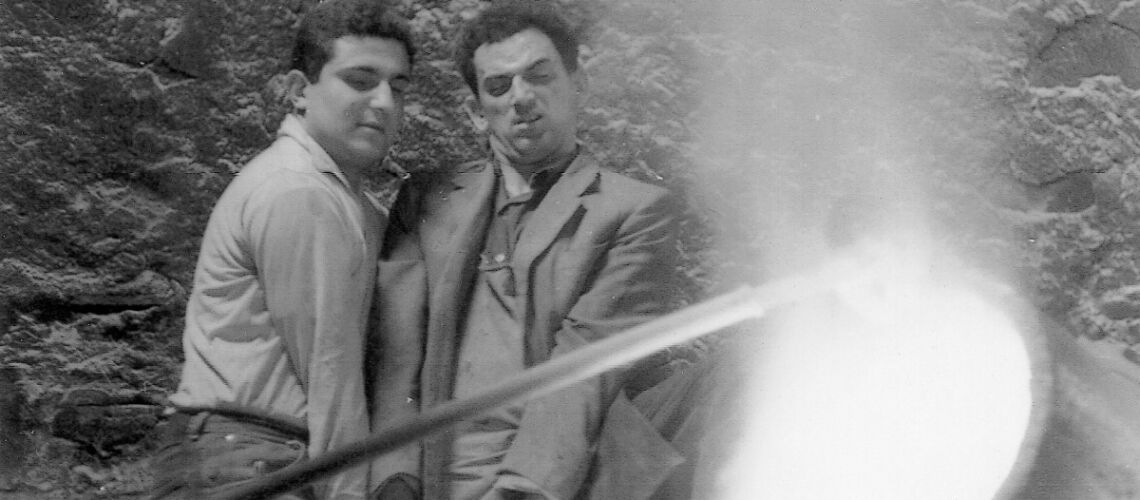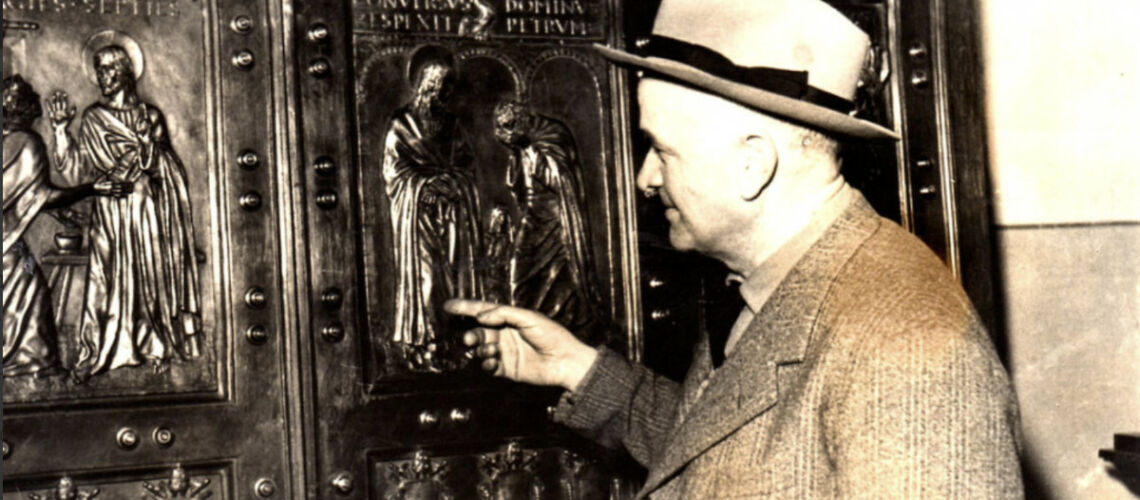The Holy Door
Part II
The rite of tearing down the wall was repeated until the opening of the Holy Door on December 24, 1974 by Paul VI. Until that day, the Holy Door in the basilica atrium was closed off by a white wall decorated with a gilded metal cross, with a leaden plaque underneath, a wall raised at the closure of the Holy Door itself at the end of the Jubilee Year of Pius XII in 1950.
Paul VI at the end of the Holy Year of 1975 introduced a ritual change for the closing of the Door: in 1949 the one cast in bronze was applied to the inner part of the Holy Door, used for the night closing of the gate passage after the collapse of the Door masonry. The bronze doors were moved to the front of the opening, and since then the wall has been demolished a few days before the opening of the door from the inside and rebuilt at the end of the Jubilee.
And the opening and closing ceremony has undergone a profound change: from 1975 the pope opens the Holy Door only by pushing and throwing open the two bronze doors (the wall was demolished by the masons a few days earlier); and the closing of the Holy Door takes place in reverse, the pope locks the two bronze doors (and the wall will be rebuilt a few days later).
So since 1950 the Holy Door of St. Peter’s Basilica has been closed from the outside by the bronze door, and no longer by the simple wall.
And these doors have become a reminder of the spirituality of the Holy Years, of indulgence, mercy and forgiveness.
THE HOLY DOOR BY VICO CONSORTI
The idea of renovating the gates dates back to the pontificate of Benedict XIV in the 18th century. But of the project only wooden models remain at the factory of San Pietro.
Prince George of Bavaria, born in Munich in 1880 from the royal family of Wittelsbach, was Vatican Canon in 1926. Upon his death in 1943, he destined his private estate to make the doors of St. Peter’s Basilica in bronze. He also left written the rules for the establishment of a commission to preside over the work, which was to have the Archpriest of the Basilica at its head, the Treasurer and Secretary of the Reverend Fabbrica di San Pietro as secretary, and his brother the Prince of Bavaria as collaborators , two representatives of the canons of the Basilica elected by the Chapter, the Director of the Pontifical Museums and Galleries and finally the Ambassador of Germani to the Holy See. The Commission had to announce an international competition and decide the winner.
After the war, in 1947 the Commission was formed by Cardinal Federico Tedeschini, Mons. Ludovico Kaas, Mons. Carlo Grosso and Mons. Vincenzo Bianchi Cagliesi, prof. Bartolomeo Nogara, Prof. Piero Canonica, Prof. Arnaldo Foschini, Archbishop Arthur Wynen. Count Eng. Enrico Pietro Galeazzi, Eng. Francesco Vacchini.
The announcement was published in July 1947 with the obligation to present the drawing of a door at 1:10 scale, the plaster sketch of a panel at 1:4 scale and a detail of the true plaster panel.
More than 80 projects arrived from all over the world. Only 12 were awarded, including Dazzi, Manzù, Morbiducci, Consorti, Cambellotti, etc., i.e. those who had kept to a classic scheme.
While they were discussing who to give the job to, Mons. Ludovico Kaas decided to have a smaller door built, not foreseen in the competition, that is the Holy Door, which was to replace the one of 1750. The cost of the new Holy Door was supported by the bishop of Basel and Lugano Mons. Franziskus von Streng, in thanks to the Swiss people for having been spared from the horrors of war. Mons. Kaas directly entrusted the execution of the work to the Sienese sculptor Vico Consorti, already registered in the competition for the other doors for the Vatican Basilica.
Consorti had already created for Count Guido Chigi Saracini, as a thank you for the liberation of the city of Siena from the Germans, the Door of Gratitude for the Cathedral of Siena, inaugurated on August 16, 1946. This door has classical references, with a search for Renaissance forms , and favorably impressed Archbishop Kaas. The contract was signed on March 1, 1949, and Consorti chose the Ferdinando Marinelli Artistic Foundry in Florence for casting and mechanical construction.
In the photo from left: Ferdinando Marinelli Sr., Vico Consorti, Count Chigi Saracini.
The Ferdinando Marinelli Foundry had already made itself known for its ability to cast other doors for the Church with lost wax, such as the one sculpted by Ludovico Pogliaghi for the Roman church of Santa Maria Maggiore and completed in 1947.
Casting the Holy Door made the Ferdinando Marinelli Foundry known throughout the Christian world, so much so that the castings and creations of other doors were assigned to it, such as the one commissioned by Cardinal Chrisanto Loque in 1956 for the Archbishop’s Palace in Bogotà (Colombia), who also turned to the sculptor Vico Consorti; and the doors for the Cathedral of Oropa (Biella) modeled by Vatteroni, Consorti and Audagna in 1960, whose total weight exceeded 11 tons; that of the Basilica of the Sacred Heart in Sasssari modeled by Mario Moschi and cast in 1969; and the Porta by Onofrio Pepe for the park of the new Court of Florence, carried out in 2005.
Consorti drew up a first sketch in January 1949 (the construction time for the Gate was very tight) which he had Marinelli cast in bronze. In the sketch there were panels with scenes taken from the Gospel and with two moments relating to the Holy Year: Boniface VIII delivering the bull of the first Jubilee against the background of the ancient Constantinian basilica, and the new Basilica with characters around the cross to indicate the last jubilee proclaimed.
In the month of June 8 panels were modeled in clay, and already cast by the Marinelli Foundry, the panels of the Buon Ladrone modeled between January and February 1949 and the four of the upper register cast in record time and never retouched by the Consorti.
On 31 August Consorti went to Rome in his Topolino Fiat to show the cast panels to Mons. Kaas.
The entire door arrived in St. Peter’s on 18 December while preparations were underway for the ceremony of the Holy Year, and the two doors were temporarily placed on the left side of the Chapel of the SS. Sacrament. After the Pope crossed the threshold of the Holy Door followed by the cardinals and prelates, the Holy Father proceeded to bless the two doors of Vico Consorti who was present on his knees and in the throes of emotion. He still didn’t know that from that day on he would be called “Vico dell’Uscio” for the rest of his life.
On 28 December the two doors were hinged into place
and subsequently in 1974 they led to a change in the ceremonial: no longer the breaking of the wall at the hands of the Pope, but the opening of the bronze doors and the subsequent closure at the end of the Jubilee. In fact in that year, when on Christmas day Pope Pius VI gave the three symbolic (but effective) hammer blows on the lime and brick wall, part of these fell on him.
With the Jubilee of Pope Pius XII in 1950 there was thus the opening of the bronze doors and his entry into St. Peter’s and likewise their subsequent closure
rite that was repeated in the special Jubilee of the end of the millennium of 2000 with the opening of Pope Francis
and subsequent closure
THE LOST WAX CASTING
The Ferdinando Marinelli Foundry was placed under pressure: a work of this magnitude had to be carried out and delivered from January to December 1949, i.e. in less than a year with the further difficulty that the models of the tiles and frames were not brought to the foundry all together, but little by little over time, that is as Consorti completed them. The “miracle” succeeded and the bronze Holy Door arrived at the Vatican on December 18, 1949, six days before the opening for the Jubilee!
In those early post-war years, the Ferdinando Marinelli Foundry worked with craft techniques very similar to those of the Renaissance: there were no lifting machines such as cranes or forklifts, everything was done by hand, there was only electricity that gave light and allowed the use of drills and electric motor discs as seen in the photo.
The long cooking of the MOULDS to burn the wax, in brick and mud stoves built on top of each form and fed day and night with bundles of wood, and then the ritual of casting the molten bronze in a primitive oven powered by charcoal and oxygenated with a fan, the crucible with about 200 kg of molten bronze lifted and moved by hand, with such precision as to pour the liquid metal precisely into the buried forms up to the apex. Then the breaking of the forms, the cleaning of the raw castings obtained, the cleaning and chiselling of the bronzes, then the assembly, the welding with an oxy-acetylene flame, the processing of the welds, and finally the patina and the gilding.
When the work was finished, the meticulous control of Ferdinando Marinelli Sr., grandfather of Ferdinando Marinelli Jr. who has been managing the Foundry since 1976.

